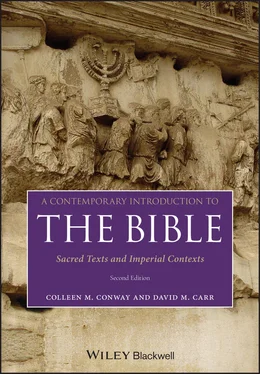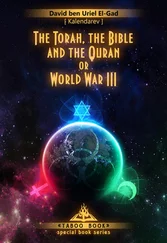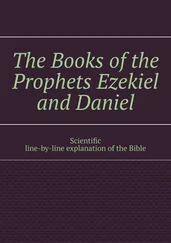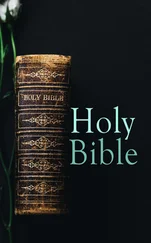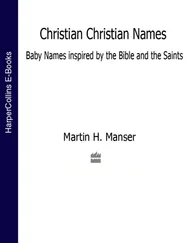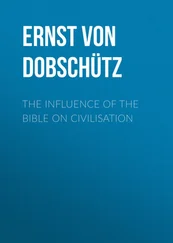The Pharaoh Merneptah hymn in Chapter 3, page 64, and the Cyrus cylinder text in Chapter 7, page 187: Pritchard, James; Ancient Near Eastern Texts Relating to the Old Testament – Third Edition with Supplement . © 1950, 1955, 1969, renewed 1978 by Princeton University Press. Reprinted by permission of Princeton University Press.
At points throughout the book extracts have been used from the Revised Standard Version of the Bible: Revised Standard Version of the Bible, copyright 1952 (2nd edition, 1971) by the Division of Christian Education of the National Council of the Churches of Christ in the United States of America. Used by permission. All rights reserved.
The publisher apologizes for any errors or omissions in the above list and would be grateful if notified of any corrections that should be incorporated in future reprints or editions of this book.
| ANET |
James Pritchard (ed.), Ancient Near Eastern Texts Relating to the Old Testament with Supplement . Princeton: Princeton University Press, 1969. |
| George |
Andrew George, The Babylonian Gilgamesh Epic: Introduction, Critical Edition and Cuneiform Texts . New York: Oxford University Press, 2003. |
| Livingstone |
Alasdair Livingstone (ed.), Court Poetry and Literary Miscellanea . State Archives of Assyria, 3. Helsinki: Helsinki University Press, 1989. |
| NJPS |
The New Jewish Publication Society Tanakh Translation . Philadelphia: Jewish Publication Society, 1985. |
| NRSV |
The New Revised Standard Version of the Bible . New York: National Council of Churches, 1989. |
| NT |
New Testament |
| OT |
Old Testament |
| OT Parallels |
Victor Matthews and Don Benjamin, Old Testament Parallels: Laws and Stories from the Ancient Near East (3rd revised and expanded edition). Mahwah, NJ: Paulist Press, 2007. |
For Bible abbreviations, see the Prologue, “Bible Abbreviations, Chapters and Verses.”
Asterisks after Bible citations, e.g. “Genesis 12–50*,” indicate that only parts of the cited texts are included.
//indicate that the texts before and after the slashes are parallel to each other.
OVERVIEW OF THE HISTORICAL PERIOD
This shows major periods and corresponding texts covered in this book.
| DATES |
1250–1000 BCE (13th–11th centuries) |
1000–930 (10th century) |
930–800 (10th–9th centuries) |
800–700 (8th century) |
700–586 (7th and early 6th centuries) |
586–538 (6th century) |
538–332 (6th–4th centuries) |
332–63 (4th–1st centuries) |
63 BCE–100 CE (1st century BCE to 1st century CE) |
| Chapter |
2 |
3 |
4 |
4 |
5 |
6 |
7 |
8 |
9–15 |
| MAJOR EVENTS (IN CHRONOLOGICAL ORDER) |
Spread of villages in hill country Tribal “Israel” emerges Saul’s chieftainship |
Formation of Davidic monarchy Jerusalem taken as capital of Judah/Israel David and Solomon |
Formation of northern kingdom of “Israel” Rise and fall of Omride dynasty |
Domination and destruction of northern “Israel” by Assyria Domination of Judah by Assyria |
Eventual decline of Assyrian power Enactment of Josiah’s “reform” Decline of Judah into domination by Babylon First wave of exile |
Destruction of Jerusalem and its Temple Second and third waves of exile of elites to Babylon |
Persian victory, waves of return, rebuilding of Temple Nehemiah’s rebuilding of the wall Divorce of foreign wives under Ezra and elevation of Torah |
Hellenistic rule Hellenizing crisis Hasmonean kingdom |
Roman rule |
| MAJOR WRITINGS (AND ORAL TRADITIONS) |
(No writings, but oral traditions about exodus, trickster ancestors) |
Royal and Zion psalms Proverbs (early forms of other texts like the non-P primeval history) |
Jacob narrative Joseph narrative Exodus – wilderness story Song of Deborah |
Prophecy to the north by Amos and Hosea Prophecy to the south by Micah and Isaiah |
Formation of Deuteronomy and following historical books (Joshua–2 Kings) Nahum and Zephaniah Early prophecies from Jeremiah |
Exilic additions to biblical books Lamentations Ezekiel and Second Isaiah Non-P (L) narrative of early Israel P coun-ter-narrative of early Israel |
Haggai Zechariah Nehemiah memoir Temple rebuilding Ezra narrative Third Isaiah Combined L/P Pentateuch Psalter |
Early parts of Enoch Ben Sira Ezra–Nehemiah Esther 1–2 Chronicles Daniel 1–2 Maccabees Judith |
Most of the New Testament |
| MAJOR NEW IDEAS AND THEMES |
Election theology |
Royal/Zion theology |
|
|
Exclusive devotion to Yahweh enforced (briefly) by Josiah |
Monotheism |
Dual Temple – Torah focus |
Judaism Resurrection |
Emergent belief in Jesus as messiah and Son of God |
Timeline
Important texts are noted in bold.
BCE SOUTH (Judah) NORTH (“Israel” in narrowersense)
1300 (Waning Egyptian domination of Canaan)
Spread of villages in Israelite hill country
1200 Merneptah Stela
(Assorted battles, e.g. Deborah, of hill-country Israelites with neighbors)
Important texts are noted in bold.
| BCE |
SOUTH (Judah) |
NORTH (“Israel” in narrower sense) |
| 1300 |
(Waning Egyptian domination of Canaan) |
Spread of villages in Israelite hill country |
| 1200 |
|
Merneptah Stela (Assorted battles, e.g. Deborah, of hill-country Israelites with neighbors) |
| 1100 |
|
Oral exodus traditionsOral ancestral traditionsOral victory traditions |
|
Saul’s “chieftainship” David (Hebron; 1010–1002) |
|
| 1000 |
David (Hebron; 1010–1002)David (Jerusalem; 1002–970) Royal psalms, Zion psalmsSolomon (Jerusalem; 970–930) Proverb collections(early form??) Non-P primeval historyRehoboam (Jerusalem) |
|
| 900 |
|
Jeroboam founds northern monarchy(early written forms of) Jacob narrative, Joseph novella exodus-Moses narrative, and Song of DeborahOmride dynasty (880–841) |
| 800 |
|
Jehu’s coup (841)Jeroboam II (782–753) |
|
Isaiah(start of collection) Syro-Ephraimite war(735–734) Assyrian domination of Israel begins (745–) |
Amos |
|
|
HoseaAssyrian domination of Judah begins (734–) Isaiah(continued), Micah |
|
Hezekiah (715–686) |
Assyrian destruction of Israel (722)Hezekiah’s rebellion and reform (705) |
| 700 |
Sennacherib’s attack and mysterious withdrawal (701)Manasseh (697–642)Amon (642–640)Josiah (640–609) |
(Waning of Assyrian power) |
|
ZephaniahJosiah’s reform (623) Josianic edition of Deuteronomy, 2 Kings, etc |
(Fall of Nineveh, Assyria’s capital) |
|
Nahum JeremiahDomination of Judah by Babylonia |
|
| 600 |
First wave of exiles (597) |
Ezekiel’s early prophecy |
| Destruction of Jerusalem and second wave of exiles (586) |
Lamentations and Psalm 137Ezekiel’s later prophecy |
| Third wave of exiles (582) |
Exilic additions to Deuteronomy, 2 Kings, and other booksNon-P/L Pentateuchal Source (incorporating exilic-modified forms of older non-P primeval history, Jacob–Joseph story, exodus-Moses story, and Deuteronomy)Priestly Pentateuchal SourceSecond Isaiah |
| Persian conquering of Babylonian empire (539) |
First wave of returnees (538)Another wave, beginning of Temple |
| restoration (532) |
Another wave with Zerubbabel, completion of Temple rebuilding (520–515) |
| 500 |
Haggai and Zechariah (1–9)Nehemiah’s return and governorships (445–425) (rebuilding wall, purification of priesthood) Nehemiah memoir |
| 400 |
Return with Ezra, divorce of foreign wives, elevation of Torah (397–) Combined (P and non-P/L) PentateuchNarratives of Temple-rebuilding and EzraThird IsaiahPsalter(final, Torah-oriented version of the book) Greek conquering of Persian empire (332) |
| 300 |
(Shifting domination of Palestine by Greek Ptolemies[Egypt] and Seleucids [Mesopotamia]; 332–142) Early parts of Enoch 1–2 Chronicles Wisdom of Ben Sira |
| 200 |
Jason purchase of high priesthood, attempt to Hellenize Jerusalem (174)Menelaus purchase of high priesthood (171) and Judean rebellion against him DanielAntiochus Epiphanes IV campaign to eradicate observant Judaism and beginning of Hasmonean-led rebellion against Hellenistic rule (167–) Purification and rededication of Temple (164) Hasmonean independence and rule (142–63) Ezra–Nehemiah, Esther1–2 Maccabees, Judith |
| 100 |
Roman takeover of Palestine (63)Rule of Herod in Palestine (40–4)Beginning of Roman empire with reign of Caesar Augustus (Octavian) (27)Birth of Jesus (4?) |
| CE |
Paul’s letters (50s)Jewish War (first Jewish revolt) (66–70) Destruction of the Temple (70) |
|
|
Gospel of MarkGospels of Matthew and LukeActs of the ApostlesRevelation of JohnGospel of JohnPastoral Epistles |
|
Second Jewish revolt (132–5) |

MAP 0.1The ancient Near East. Redrawn from Adrian Curtis (ed.), Oxford Bible Atlas (4th edition). Oxford, New York: Oxford University Press, 2007, page 67.
Читать дальше
